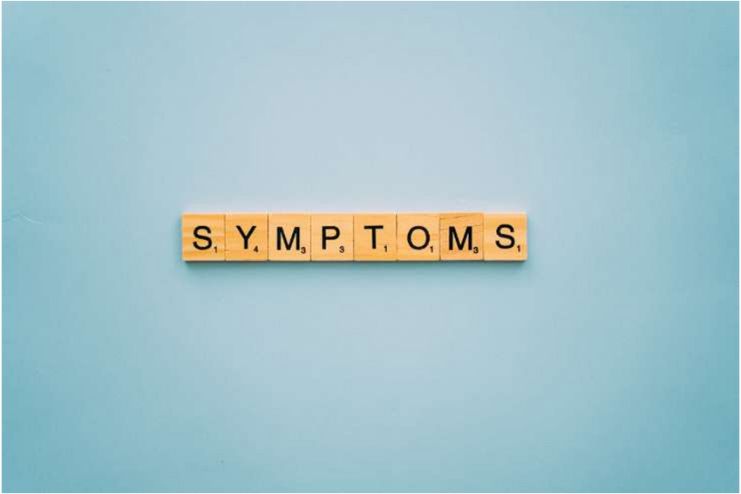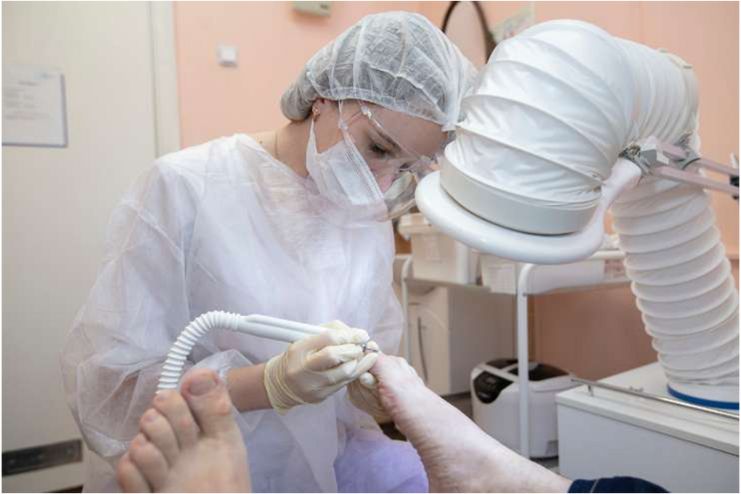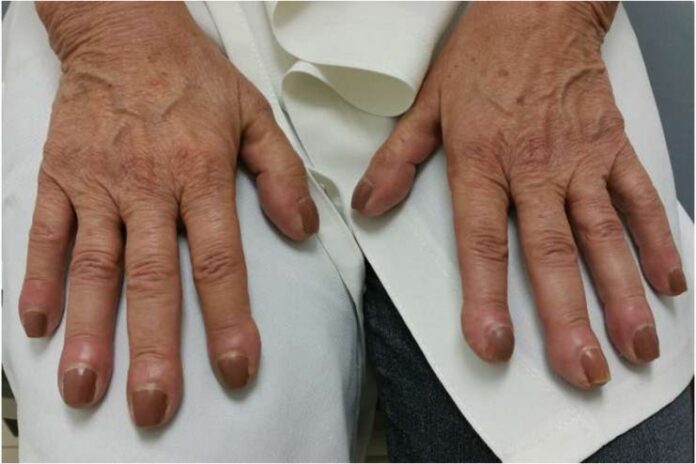Affiliate Disclaimer
Some links in this article are affiliate links. We may earn a small commission if you make a purchase through these links, at no extra cost to you. We only recommend products we find useful to our readersClubbed fingers, commonly referred to as digital clubbing, describe the observable rounding and expansion of the nails and fingertips. This syndrome can indicate chronic disorders affecting the heart, lungs, or other essential organs and is frequently a reaction to underlying health problems.
Clubbing changes the fingers’ appearance and form, making them swollen with downward-curving nails at the tips. Early detection of clubbed fingers is essential since they frequently serve as an obvious indicator of more significant medical disorders. Early diagnosis enables prompt medical assessment and treatment, possibly treating the underlying problem before issues develop.
We have provided all the important information about clubbed fingers, including its various causes and symptoms. Read on to learn full details about various treatments for clubbed fingers.
What Do Clubbed Fingers Look Like?
Downward-curving fingernails or toenails that resemble spoons characterize clubbed fingers. When pushed, the nails could feel supple and lose their cuticle. It frequently happens when the tips of the fingers or toes enlarge or extend.
Clubbed fingers may be a sign of cardiac problems, lung cancer, or digestive disorders, including celiac disease or cystic fibrosis. Clubbing typically occurs as a result of hypoxemia or persistently low blood oxygen levels. A glossy surface may also grow on the nails, adding to their unique look.
When examining clubbed fingers closely, the tiny space that forms when the fingernails are pressed together (Schamroth’s sign) vanishes. Early modifications are more accessible to miss because this transformation frequently happens gradually.
The more severe condition of clubbed fingers is hypertrophic osteoarthropathy, which involves the painful development of connective tissues. This inflammation may cause fever, joint pain, and fluid accumulation in the synovial area of the joint.
Symptoms of Clubbed Fingers

There are various symptoms of the problem of clubbed fingers. Some of the significant clubbed finger symptoms are listed below.
- The softening of the nails and the appearance of dislocation from the nail bed make them look like they are floating.
- The tips of fingers become enlarged.
- Increasing the angle between the cuticle and the nail, they appear to be in a straight line.
- The fingertips also become red and warm.
- People also experience the curving of the nail in a downward direction.
See your healthcare physician if you observe any indications of nail clubbing. Clubbed nails should be examined immediately, as they may indicate a dangerous problem.
Causes of Clubbed Fingers
Clubbed fingers are usually associated with conditions that reduce the oxygen concentration in the blood. Below are some of the significant causes of clubbed fingers.
- Lung cancer is considered one of the most common causes of clubbed fingers. Lung cancer affects breathing ability and causes various difficulties. This results in the concentration of oxygen in the blood.
- Another major cause of clubbed fingers is pulmonary fibrosis. The development of fibrous tissues instead of normal lung tissues links this condition to reduced oxygen concentration in the blood.
- A hereditary condition called cystic fibrosis causes excessive mucus production. This mucus may accumulate in the intestines, airways, or other organs. Your medical practitioner may prescribe medication to treat infections or open your airways.
- Your lungs’ tubes may get damaged if you have bronchiectasis. When you cannot eliminate mucus, you may continue to have infections. The cause of your bronchiectasis, such as cystic fibrosis, must be treated. Additionally, you might require chest physical therapy, antibiotics, and adequate hydration. You might need surgery.
- A cardiac problem, as well as heart valve disease, can also cause the condition of clubbed fingers.
- Liver cirrhosis can also result in the clubbing of fingers.
How is Finger Clubbing Identified?

You can check for finger clubbing by measuring the angle between the nail’s base and the nail bed, which we call the Lovibond angle.
To analyze angles known as the hyponychial angle and the phalangeal depth ratio, doctors may ask you to show them your finger at various angles and about your other fingers.
They might also employ the Schamroth sign, which entails tapping the joints of the fingers nearest the nails while holding the same fingers on opposing hands. People without finger clubbing typically have a diamond-shaped space around the nail bed between the two fingers.
This Schamroth sign is negative or typical. There is no diamond form in those who have clubbed fingers. The nail ends may bend away from one another, and the fingers may be perfectly flush with the nail bed.
Treatment

The treatment of clubbed fingers is more focused on treating the underlying cause. Doctors can use chemotherapy or radiation to treat cancer, while they may perform surgery to treat congenital cardiac disorders.
Apart from this, there are some treatments that you can use to treat clubbed fingers and their underlying cause. Some primary therapies to reduce the effect of clubbed fingers are listed below.
Oxygen therapy
Hyperbaric oxygen can be inhaled for an hour every day, and it is considered highly useful for increasing the oxygen concentration in the blood.
Do not use aerosol sprays
Avoid using aerosol sprays, which can help treat lung inflammation caused by exposure to toxins. Wear masks while working to reduce the risks of asbestosis.
Breathing exercises
Performing simple breathing exercises is also helpful in improving lung capacity and countering low oxygen concentration. For better benefits, you can also try some yoga exercises.
Balanced healthy diet
Consuming a balanced diet with healthy food products, especially green leafy vegetables, is considered highly beneficial for improving hemoglobin levels in the blood and improving oxygen concentration.
Final Thoughts
More than just a physical oddness, clubbed fingers are a clear sign of possible health problems and are frequently linked to dangerous illnesses like cardiovascular or respiratory disorders. Effective management identifies the changes early, comprehends their importance, and addresses the underlying causes. Don’t disregard signs like rounded fingertips or bent nails; get a complete assessment from a medical specialist immediately. The first step in prevention is awareness, and your health matters.
FAQs
- Are clubbed fingers reversible?
Clubbed fingers can be reversible if the underlying problem is treated early. Even though doctors manage the underlying cause, advanced cases may lead to long-lasting alterations.
- Is finger clubbing hereditary?
In certain families, clubbing could be a genetic abnormality. When this anomaly is seen in a person who appears to be in good health, it may be beneficial to investigate the length of the abnormality and the potential genetic distribution.
- Can clubbed fingers occur in healthy individuals?
Nail clubbing can occasionally happen to healthy people for no apparent reason. Please don’t wait to have it examined by a healthcare professional, though, as it frequently indicates a severe illness that requires medical attention.
-
Aug 2017Written by Prajakt K
-
Dec 2024Edited by Ankita
References
- https://www.verywellhealth.com/clubbing-of-fingers-914776
- https://my.clevelandclinic.org/health/diseases/23957-clubbed-fingers
- https://www.mountsinai.org/health-library/symptoms/clubbing-of-the-fingers-or-toes
- https://www.webmd.com/a-to-z-guides/clubbed-fingers-and-thumbs-causes
- https://www.medicalnewstoday.com/articles/clubbed-fingers#speaking-to-a-doctor
- https://bestpractice.bmj.com/topics/en-us/623
- https://www.medscape.org/viewarticle/571916_2
- https://resources.healthgrades.com/right-care/symptoms-and-conditions/finger-clubbing
In this Article

















